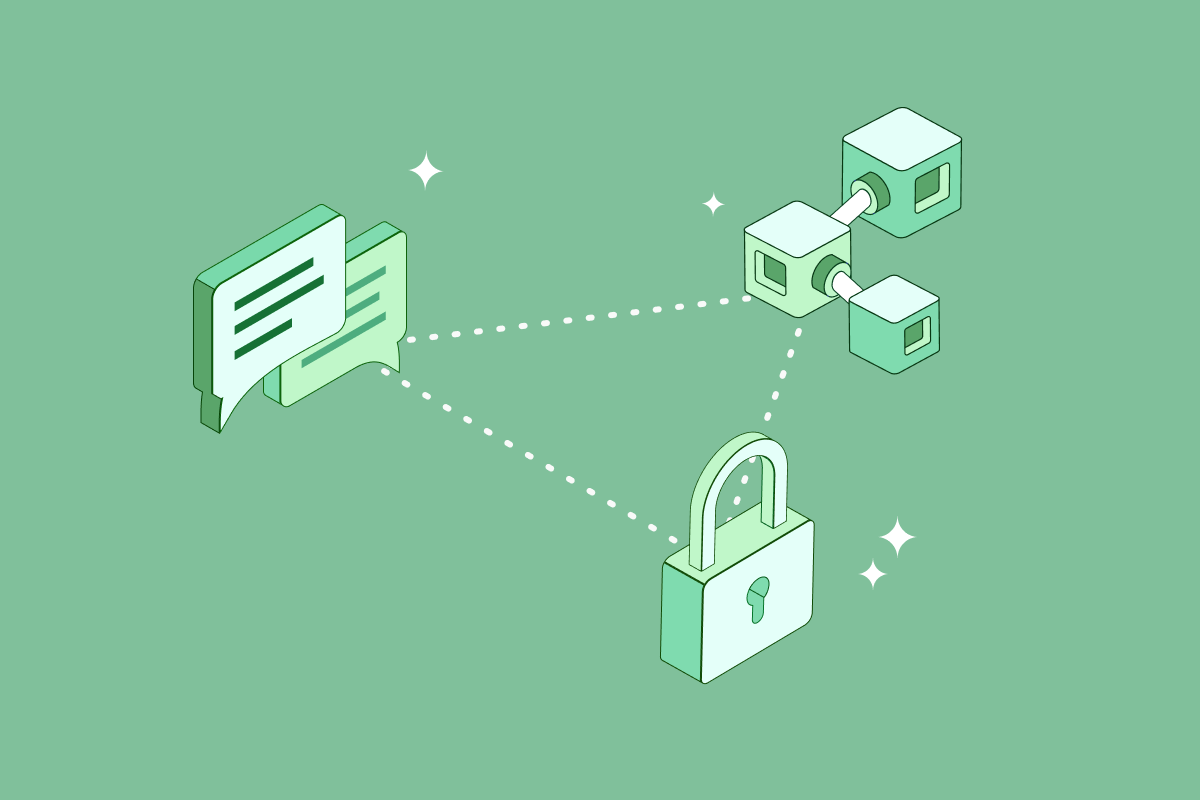Proof of Stake, sharding, state channels, sidechains: an entire subsector has emerged to solve the Blockchain Trilemma and optimize networks for mainstream use.
The Blockchain Trilemma expresses a widespread belief that decentralized networks can provide only two of the three benefits in terms of decentralization, security, and scalability at any given time. We explain how continued innovation in the decentralized ecosystem has led to a wide variety of Tier-1 and Tier-2 solutions that seek to solve the trilemma once and for all.
What is Blockchain Trilemma?
While blockchain technology has proven its remarkable utility in many industries, from finance to the arts, the underlying building block comes with unique challenges when compared. In the early 1980s, computer scientists developed what is called the CAP theorem to express perhaps the biggest of these challenges. According to the CAP theorem, decentralized data stores, where the blockchain is an iteration, can only provide two of the three guarantees at once: consistency, availability, and partition tolerance (CAP). In the context of modern distributed networks, this theorem has evolved into the Blockchain Trilemma, the popular belief that public blockchains must sacrifice security, decentralization or scalability.
Most public blockchain networks today use processes called decentralized Proof-of-Stake (PoS), while public blockchain networks, which dominate Proof-of-Work (PoW) centralized network infrastructures, to achieve consensus, private – or “permissive” – blockchains and Distributed Ledger Technologies (DLTs) can be configured in a variety of ways. Here we will take a look at the most common blockchain consensus mechanisms to provide a better overall understanding of the different applications. Public blockchains manage a widely distributed network.
Achieving a network that offers waterproof security on a widely decentralized network while managing transaction volume at internet scale is the holy grail of blockchain technology. A global community of businesses, startups, and technologists is fervently developing Layer-1 and Layer-2 solutions that solve this Blockchain Trilemma. Layer 1 refers to the base layer or primary layer of a blockchain network. Layer 2 generally refers to various technical optimizations and products that can be built on top of existing blockchain networks to increase their scalability. Striking the right balance between the two layers can act as an explosive catalyst for blockchain technology adoption and the growth of decentralized networks.
It is important to understand each component of the Blockchain Trilemma before we start deciphering potential solutions.
What is decentralization?
Decentralization is the core ethos of blockchain technology and drives projects across the ecosystem. The application of decentralized processes and technology eliminates the role of intermediaries across industries and manifests itself in many different ways. For example; By removing banking institutions from financial instruments, operating a mining rig platforms instead of intermediaries can distribute profits and governance to users and the wider community. At an even more fundamental level, decentralized networks come to crowdsource consensus, meaning that no one can control or censor the data transacted through them. However, achieving optimum decentralization tends to reduce network throughput. More are monopolized with cumulative influence over network governance.
What is Blockchain Security?
To increase network throughput in a blockchain network, there is an incentive to reduce the distribution of blockchain nodes geographically, in number, or both. However, this turn towards greater centralization reduces security in PoW networks. When consensus is achieved on an open network with a limited distribution of nodes, a 51% attack is more likely as hackers can more easily muster the required hash power. By crushing a network, hackers can hijack the network and manipulate transactions for financial gain. For example, in August 2020, the Ethereum Classic (ETC) blockchain, a fork of Ethereum (ETH), suffered three 51% attacks that reorganized more than 4,000 blocks. This allowed the perpetrators to manipulate data and double the ETC currency, resulting in millions of dollars in depreciation on the network. Blockchain security is a critical network aspect that cannot be compromised.
What is Scalability?
Scalability over a blockchain protocol refers to the blockchain’s ability to support high transaction throughput and future growth. This means that the performance of the blockchain will not degrade as use cases and adoption accelerate. Underperforming blockchains are said to lack scalability as adoption increases. Blockchain Trilemma tells us that greater scalability is possible, but will suffer as a result of security, decentralization, or both. Scalability is the only way blockchain networks can reasonably compete with legacy, centralized platforms whose network settlement times and availability are far superior at this point. While many blockchain platforms have established decentralization and security, achieving scalability remains the biggest challenge for today’s leading decentralized networks.
Blockchain Trilemma: Layer 1
In the decentralized ecosystem, Layer 1 refers to blockchain protocols such as Bitcoin, Litecoin, and Ethereum. There are a number of methods currently in development or implementation that aim directly at improving the scalability of blockchain networks.
Consensus Protocol Improvements: Proof of Work is the consensus protocol currently in use on popular blockchain networks like Bitcoin. While PoW is secure, it can be slow. For example, Bitcoin only achieves seven TPS. This is why many blockchain networks – perhaps most importantly the upgrade of Ethereum to Ethereum 2.0 – opt for the Proof of Stake (PoS) consensus mechanism. The PoS consensus protocol determines the validator status based on a stake in the network, rather than requiring miners to decode cryptographic algorithms using significant computing power. This is expected to significantly and fundamentally increase the capacity of the Ethereum network while increasing decentralization and ensuring security.
Fragmentation: Fragmentation is adapted from distributed databases and has become one of the most popular Tier-1 scaling solutions, despite its somewhat experimental nature in the blockchain industry. Fragmentation divides transactions into smaller datasets called “chunks”. These chunks are processed in parallel by the network simultaneously, allowing sequential operation on multiple transactions at the same time. Also, instead of each network node keeping a copy of each block from its initial block to the present, this information can be partitioned and held by different nodes, each of which remains internally consistent. The shards provide evidence to the main chain and interact with each other to share addresses, balances and public statuses using cross shard communication protocols. Ethereum 2.0, along with Zilliqa, Tezos, and Qtum, is a high-profile blockchain protocol that explores the use of shards.
Blockchain Trilemma: Layer 2
In blockchain, Layer 2 refers to a network or technology that runs on top of a core blockchain protocol to increase its scalability and efficiency. For example, Bitcoin is a Layer-1 protocol and Lightning Network is a Layer-2 solution created to improve transaction speeds on the Bitcoin network. Layer-2 protocols have experienced tremendous growth in recent years and may be the most effective way to overcome scalability challenges, especially for PoW networks.
Nested Blockchains: It is a decentralized network infrastructure that uses a main blockchain to set parameters for the wider network while a nested blockchain is executed in a network of interconnected secondary chains. Multiple levels of blockchain are created on this main chain and these levels use a parent-child connection. The main chain delegates work to the child chains that process it and return it to the parent after it is complete. The underlying blockchain is not involved in network functions unless conflict resolution is required. The OMG Plasma project is an example of the Layer-2 nested blockchain infrastructure used on top of Layer-1 Ethereum to facilitate faster and cheaper transactions. Work distribution under this model reduces the processing load on the main chain to exponentially increase scalability.
Status Channels: A status channel facilitates two-way communication between a blockchain and off-chain transaction channels, using various mechanisms to increase overall transaction capacity and speed. A status channel does not require the immediate intervention of miners to verify the transaction. Instead, it is a network-adjacent resource that has been sealed using a multi-signature or smart contract mechanism. When a transaction or group of transactions is completed in a state channel, the final “state” “Channel” and all its natural transitions are recorded on the underlying blockchain. Liquid Network, Celer, Bitcoin Lightning, and Ethereum’s Raiden Network are examples of status channels. In the triple trade-off, state channels sacrifice some degree of decentralization to achieve greater scalability.
Sidechains: A sidechain is a chain of transactions adjacent to the blockchain used for large batches of transactions. Sidechains use an independent consensus mechanism relative to that of the original chain, which can be optimized for speed and scalability. Service tokens are often used as part of the data transfer mechanism between side chains and main chains. The primary role of the main chain is to provide overall security and conflict resolution. The side chains cleave from the state channels in a number of integral ways. First, sidechain transactions are not private among participants – they are generally recorded on the ledger. Also, sidechain security breaches do not affect the main chain or any other sidechains. Building a sidechain takes a lot of effort, as the infrastructure is built from the ground up.
Final Words
While the Blockchain Trilemma presents significant challenges for adopting blockchain technology, emerging solutions may solve the puzzle. The goal is to find an effective balance between network security, decentralization and scalability. While the CAP theorem has been valid for almost four decades, the application of Layer 1 and Layer-2 solutions is shifting the paradigm at once towards distributed, secure, decentralized blockchain networks.



